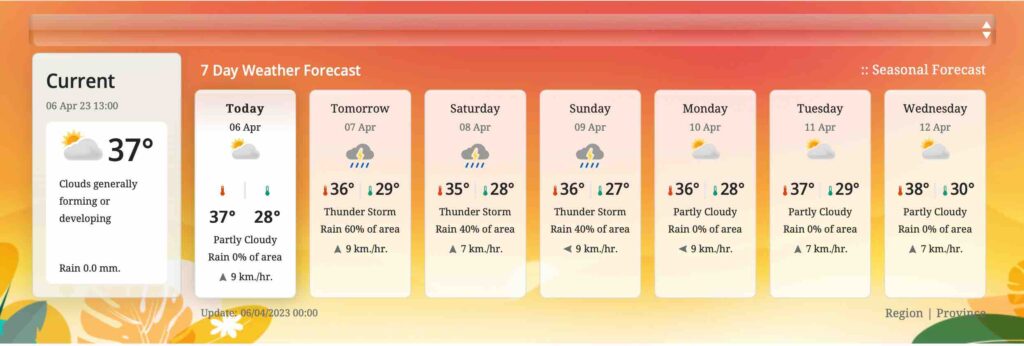Thailand Confronts Heatwave Dangers as Heatstroke Deaths Mount.Government warns Bangkok could feel like more than 52°C.
In Thailand, the ongoing heatwave has claimed the lives of 30 people between January 1 and April 17, 2024, according to the Thai Health Ministry’s report on April 24. This number is distressingly close to last year’s total of 37 deaths, underscoring a concerning trend as the planet experiences record-breaking temperatures.
RELEVANT SUSTAINABLE GOALS


Sixth day of ‘very dangerous’ heat index
Bangkok, Thailand’s bustling capital, has been particularly hard-hit. On April 24, the city saw temperatures soar to 40.1°C, and forecasts predicted similar conditions for the following day. However, the heat felt much more oppressive than the mercury suggested, reportedly reaching a stifling 52°C on the heat index, which measures the combined effect of temperature and humidity on the human body.
This extreme condition prompted the Bangkok city authorities to issue a dire warning through a Facebook post: “Warning: the heat index today is ‘extremely dangerous’. Please avoid activities outdoors.”
These extraordinary temperatures are part of a broader pattern influenced by the El Niño weather phenomenon, which typically exacerbates the hot and dry conditions across Southeast Asia. El Niño, a climate pattern originating from the tropical Pacific, often leads to drier and warmer weather in this region while also triggering severe weather events elsewhere.
The Thai government, recognizing the immediate risks, has advised residents to take precautions. Authorities are urging the elderly and those with underlying health conditions, such as obesity, to remain indoors, stay hydrated, and limit physical activity to indoor environments.
As Bangkok and other regions brace for continued severe heat, with the Thai Meteorological Department forecasting temperatures ranging from 41°C to 44°C into early May, the need for vigilance and preparedness has never been more critical.
Unrelenting Heatwave Strikes South and Southeast Asia
The blistering heat has enveloped the region, compelling thousands of schools in the Philippines to halt in-person classes due to safety concerns. In India, an incident during an election campaign speech highlighted the oppressive heat when a minister collapsed, prompting an immediate response from the country’s weather bureau. They forecasted severe heatwave conditions across nine eastern and southern states in the days ahead. Even Nepal, typically known for its cooler mountainous climate, issued health warnings and placed hospitals on high alert as temperatures climbed in its southern plains.
Scientific studies increasingly link these harsh conditions to climate change, indicating that heatwaves are becoming longer, more frequent, and more intense. A recent report by the United Nations emphasized that Asia was the continent most impacted by climate and weather hazards in 2023, suffering significant casualties and economic losses primarily due to floods and storms. As these extreme weather events become more common, the imperative for robust climate action and adaptation strategies grows ever more urgent.
You may also be interested in :
In The Grip of Heat: A Close Look At Rising Temperatures in Singapore and Malaysia



